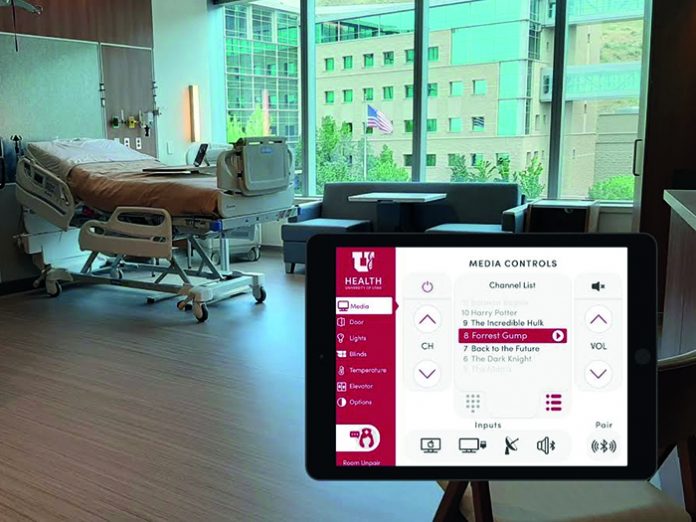As the premier academic medical centre in the intermountain region of the western United States, the University of Utah Health has long used digital signage to communicate with visitors, patients and students. As part of its innovative new Smart Room initiative throughout the Craig H. Neilsen Rehabilitation Hospital, the University of Utah Health will take patient care and education to new heights with a dedicated, cloud-based Carousel Digital Signage network that also sharply reduces their operational burden.
The Smart Rooms represent a technological leap for the rehabilitation hospital, bringing together patient-assistive technologies (building automation, secure BYOD object control, enterprise voice control, voice-based nurse calls, and more) onto a common iOS-based platform. JAMF, a device management provider that helps IT departments bring the Apple experience to corporate, education and government organisations, seamlessly integrated the Smart Room technologies and applications to automate zero-touch patient admission, discharge and room transfers; and enable in-room BYOD functionality for patients and staff. The latter includes temperature and lighting control, door and window shade activation, and in-room entertainment control.
JAMF also handled the expert integration and rollout of Carousel Cloud digital signage software on the same network. A long-time Carousel Digital Signage partner, JAMF introduced Carousel Cloud to University of Utah Health’s IT staff as an alternative to the university’s existing digital signage systems. For Brent Elieson, Associate Director for the IT Business and Innovation Office, the benefits of Carousel Cloud far outweigh those of the other digital signage systems on campus – especially given the advanced interoperability taking shape within the Smart Room ecosystem.
“We have found that our digital signage initiatives in other buildings have grown stale, and this is because the technical burden of creating content, updating software, and maintaining the network is too high,” said Brent. “Our mission is to preserve, enhance and restore the quality of life for patients with severe and disabling conditions, and help them focus on the positive. That focus is diminished when we are weighed down by the burden of technology. We needed something that was easy to use and maintain, could help us reliably communicate important messages, and serve as a viable patient education platform.”
Carousel Cloud immediately removes the technical headaches through a lightweight, software-defined architecture. The initial deployment will drive 4K content to 60 digital signage displays across several lobbies, hallways, two gyms and a cafeteria. In addition to the Carousel CMS for content management, the network will leverage Carousel’s innovative approach of converting Apple TV devices to media players. Beyond the initial Apple TV device configurations, JAMF will schedule and maintain all iOS upgrades and patches. That will grow even more valuable as the Carousel Cloud network scales; Brent confirms they are considering a broader expansion into patient rooms, many of which already have Apple TV devices.
JAMF brings additional value to the digital signage operation by enabling interoperability between iPads and Carousel Cloud via AirPlay. For example, healthcare providers can use AirPlay to interrupt general Carousel content to deliver on-demand patient education sessions. The Carousel content immediately resumes following the session’s conclusion.
With most of the ‘busy work’ outsourced – in addition to JAMF’s maintenance responsibilities, the hospital will use outside design firms for content creation – Brent and his colleagues are left with a fully functional, enterprise-level digital signage network in the cloud that will require minimal interaction on their side. More importantly, it will deliver enormous value in helping patients focus on recovery and education, and live full and productive lives as active community participants.
“Many of our patients have severe brain and spinal injuries, which means they have profound assistive and transition needs,” said Brent. “The technologies that comprise our Smart Room scope, including our Carousel Digital Signage network, will empower our patients to operate all of this cutting-edge technology autonomously. The feeling of empowerment when the patient opens the door for the healthcare provider, for example, is gigantic, and our staff can return that favour through stronger education around the recovery and transition process on our digital signage.”





